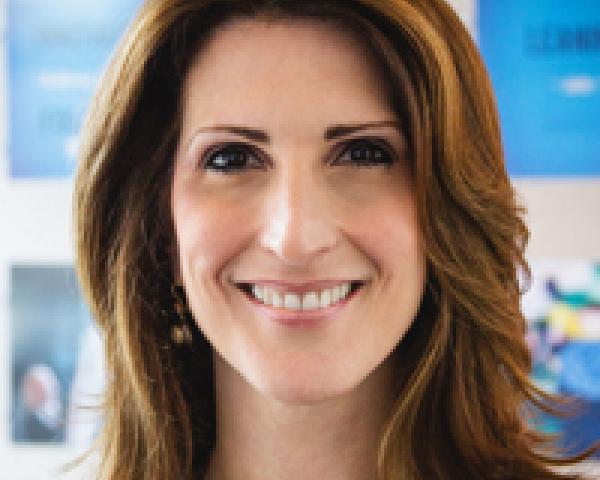Medicare Set-Asides (MSAs) continue to frustrate parties resolving workers’ compensation (WC) claims. For many, the MSA is the last major hurdle to a closed file. Sometimes, the hurdle involves an MSA report from a non-legal third-party vendor that does not seem to make sense based on the facts of the case. Other times, it is the federal government’s response to a request from the settling parties that it review an MSA report which causes the frustration. The fact that the WC claim in question may be a denied WC claim only serves to intensify that frustration. The purpose of this article is to separate fact from fiction when it comes to MSAs in denied WC claims. In short, MSAs are not needed when an employer/insurance carrier (E/C) has not accepted and does not accept responsibility for a claimant’s future medical expenses as a part of resolving the claim. Asking the Centers for Medicare & Medicaid Services (CMS) to review and approve your $0 MSA though is problematic as we all know. 2017 is the right time to find an alternate risk transfer solution that creates efficiencies in your claims handling process. After reading this article, your goal should be to review your current process and think about the time and money being spent on denied WC claims. Instead of the problems associated with CMS reviewing $0 MSA proposals, you could instead close the file faster by relying on a legal opinion from a lawyer experienced in MSA issues. All parties in the WC system would capitalize on a more streamlined system if they believe this one basic fact: FACT: Medicare’s recovery rights under the Medicare Secondary Payer (MSP) Act are not automatic. The MSP Act does not grant Medicare unlimited recovery rights. It does not even grant Medicare automatic recovery rights. Instead, two things must happen for Medicare’s recovery rights to ripen: 1) a primary plan or payer must accept responsibility for a claimant’s medical expenses; and 2) that responsibility must be evidenced by a judgment, a compromise for release or other means. Unless both occur, Medicare does not have recovery rights under the MSP, period. That also means that it does not have a right to have an MSA funded to pay for a claimant’s future medical care. In the event of a WC claim denied from the outset and the E/C never accepts responsibility for future medicals, the MSP Act is not triggered. FICTION: The MSP Act requires MSAs. Nowhere in the MSP Act does it mention MSAs, Medicare Set-Asides or even future medical expenses. What it does say is that Medicare won’t pay for a beneficiary’s medical expenses where payment has been made under a workers’ compensation plan. 42 U.S.C. § 1395y(b)(2)(A)(ii). An MSA gets funded to pay for those future medical expenses a claimant anticipates incurring down the road which the E/C already paid for in the settlement. While the law does prohibit Medicare from making payment for those expenses with one exception, it does not obligate anyone to use an MSA to ensure Medicare does not pay those same items, services or expenses previously paid for by the E/C in the WC award. FACT: An MSA might be appropriate for anyone, not just current Medicare beneficiaries. While the MSP Act contemplates that Medicare will not pay for a Medicare beneficiary’s medical expenses when payment has already been made under a WC plan, other scenarios are conceivable. First, a claimant may not yet be Medicare enrolled but could be close. Those in the MSP industry refer to these individuals as having a “reasonable expectation” of Medicare enrollment. Typically, the time frame in play here is 30 months from settlement. So, you will see MSA issues arise if the claimant falls within this period of “reasonable expectation.” But an MSA could also be an issue for other claimants. Since the MSP Act prohibits Medicare from making payment where payment has been made, an argument exists that the issue would need to be examined for a much larger pool of claimants. In any WC settlement, it’s possible that the E/C is paying for future medical expenses. The MSP Act prohibits Medicare from paying when payment has been made under a WC plan. 42 U.S.C. § 1395y(b)(2)(A)(ii). The claimant could take the proceeds and get on Medicare at some point post-settlement. See also: 25 Axioms Of Medical Care In The Workers Compensation System Let’s assume that happens five (5) years after settlement. If the claimant still has money remaining for future medicals from the WC award, the statute would prohibit Medicare from paying for his future medicals that were paid for in the WC award. Now that the claimant is a Medicare beneficiary and has money remaining for that specific purpose, the law would kick in. To comply with the law, the claimant should spend down his remaining future medical proceeds on injury-related care otherwise covered by Medicare before billing Medicare. Of course, all that presumes that the claim was accepted and the E/C paid future medical dollars to the claimant as part of the WC award. When a WC claim is denied and ultimately “clinchered” on a doubtful and disputed basis, no future medical dollars change hands since the E/C does not accept responsibility for future medicals. Thus, no MSA would be needed, and you would simply want to document the file appropriately. FICTION: When future medical expenses are expected to be incurred, an MSA must be funded. Future medical expenses ≠ MSA funding in every case. Only when Medicare’s right of recovery is triggered would an MSA need to be funded. So, those future medicals must be related to the compensable claim for the MSA to need to be funded. Even then, there are options available other than funding an MSA (such as obtaining a legal opinion) to comply with the law stating that Medicare will not pay where payment has been made under a WC plan. 42 U.S.C. § 1395y(b)(2)(A)(ii). FACT: A denied WC claim represents a compromise situation as opposed to a commutation under the federal regulations. Medicare explains the distinction in its regulations. A commutation occurs when the amount of the WC award is intended to compensate the claimant for all future medicals required because of the work-related injury or disease. 42 C.F.R. § 411.46(a). According to Medicare, “a lump-sum compromise settlement is deemed to be a workers’ compensation payment for Medicare purposes, even if the settlement agreement stipulates that there is no liability under the workers’ compensation law or plan.” 42 C.F.R. § 411.46(b)(1). This regulation is titled "Lump-Sum Compromise Settlement." So, denied WC claims must be compromise situations, not commutations, under Medicare’s own regulations. FICTION: The CMS WCMSA Reference Guide is the only place to look for how CMS handles future medical expenses. While most will point to the WCMSA Reference Guide as the definitive statement about future medical expenses, it represents unofficial guidance from CMS on the issue. Official guidance can be found in the code of federal regulations. 42 C.F.R. §411.46. There, CMS discusses the differences between future medicals in commutation cases versus compromise cases. Since a denied WC claim would be considered a compromise case, the regulations should be the first place to start when examining the MSA issue in a denied WC claim. FACT: The regulations, like the statute itself, do not address MSAs. Hard to believe, but this is true. Both the statute and all regulations promulgated by CMS in support of the statute fail to mention MSAs or Medicare Set-Asides even once. Since the regulations are what provide us with any federal administrative agency’s official statutory interpretation, it is accurate to say that no substantive legal standard exists today when it comes to MSAs, even in WC. 42 U.S.C. §§ 1395hh(a)(1), (2). FICTION: The regulations address future medicals for commutation cases exactly how they address future medicals for compromise cases. CMS’s own regulations treat compromise cases much differently than commutations. With respect to commutations, CMS advises “If a lump-sum compensation award stipulates that the amount paid is intended to compensate the individual for all future medical expenses required because of the work-related injury or disease, Medicare payments for such services are excluded until medical expenses related to the injury or disease equal the amount of the lump-sum payment.” 42 C.F.R. § 411.46(a). Commutations are paid out (presumably) at 100 cents on the dollar. Thus, this regulation highlights the law which says that Medicare will not pay where payment has been made under a WC plan. 42 U.S.C. § 1395y(b)(2)(A)(ii). Again, if the E/C is paying dollars for future medicals, then Medicare won’t pay for those same items, services or expenses. See also: How Politics Drives Up Your MSA Costs CMS treats compromise cases differently. With respect to future medical expenses in compromise cases, CMS advises, “(1) Basic rule. Except as specified in paragraph (d)(2) of this section, if a lump-sum compromise settlement forecloses the possibility of future payment of workers' compensation benefits, medical expenses incurred after the date of the settlement are payable under Medicare. (2) Exception. If the settlement agreement allocates certain amounts for specific future medical services, Medicare does not pay for those services until medical expenses related to the injury or disease equal the amount of the lump-sum settlement allocated to future medical expenses.” 42 C.F.R. § 411.46(d). Very different result in a compromise claim as compared to a commuted claim. Denied WC claims would be considered compromise claims, no matter who you ask. In those cases, CMS tells us that its basic rule is that CMS pays future medicals, except where an allocation for future medicals exists. When an allocation exists, then the claimant should spend down and exhaust before Medicare will pay. The rules for denied WC claims are different from the rules for accepted WC claims, whether CMS and its contractor admit it or not when it is reviewing the $0 MSA proposal for your denied WC claim. FACT: Submitting MSAs is a voluntary process. Remembering that the statute and regulations are both silent about MSAs, we can look to the CMS WCMSA Reference Guide. There, CMS tells us, “There are no statutory or regulatory provisions requiring that you submit a WCMSA amount proposal to CMS for review.” CMS WCMSA Reference Guide v2.5, Section 1.0 (April 4, 2016). FICTION: CMS workload review thresholds provide safe harbors for those cases failing to meet threshold. This is perhaps the biggest fiction about MSAs in the WC industry. While CMS is willing to review certain MSA proposals, it does not have the resources to review everything. Thus, it imposes certain workload review thresholds based on a claimant’s Medicare enrollment status and the gross WC award which help its contractor to determine which cases to review and which to not review. If the case fails to meet the threshold, it does not mean that the parties can ignore the MSA issue. Medicare specifically counsels otherwise. CMS says, “These thresholds are created based on CMS’ workload, and are not intended to indicate that claimants may settle below the threshold with impunity. Claimants must still consider Medicare’s interests in all WC cases and ensure that Medicare pays secondary to WC in such cases.” CMS WCMSA Reference Guide v2.5, Section 8.1 (April 4, 2016). CMS goes on to say, “Regardless of the low dollar threshold, Medicare beneficiaries should always consider Medicare’s interest in all WC cases and ensure that Medicare is secondary to WC.” CMS WCMSA Reference Guide v2.5, Section 14.0 (April 4, 2016). The same holds true in the event of a denied WC claim. While Medicare would not be willing to review a $0 MSA proposal in a denied WC claim when the matter fails to meet threshold, the parties should still ensure the files are documented appropriately with evidence that Medicare’s recovery rights under the MSP Act were never triggered in that case. FACT: CMS is willing to review a $0 MSA proposal. Not only will CMS review it, CMS provides an example of the letter you will get in return if it approves your $0 MSA proposal. See CMS WCMSA Reference Guide v2.5, Appendix 5 – Sample Letters April 4, 2016). You might be interested to know that this conclusion, just like the conclusion in any other approval letter, is not considered final by Medicare unless or until you provide Medicare with a copy of your final executed WC settlement agreement. FICTION: It takes CMS the same amount of time to review a $0 MSA proposal as it does any other MSA proposal. You might have experienced this. You submit a $0 MSA proposal to Medicare, but instead of an approval letter, you receive a development request seeking additional documentation related to medicals or evidence that the E/C never accepted responsibility for medical expenses. Despite your best efforts, it seems that you’re destined to either receive a development request or a close out letter, forcing you to start the process over again. While CMS has a stated goal of reviewing a matter within 45 to 60 days, it seems $0 MSA proposals take longer, sometimes much longer, to review and approve. FACT: Once you’ve voluntarily asked CMS to review your $0 MSA, you’ve agreed to play by CMS’ own rules. Medicare is clear with its expectation here. “If you choose to use CMS’ WCMSA review process, the Agency requests that you comply with CMS’ established policies and procedures.” CMS WCMSA Reference Guide v2.5, Section 1.0 (April 4, 2016). So, if you believe a claim is denied properly under your state law, temper your expectations if you ask CMS to review and approve a $0 MSA proposal in the case. By agreeing to bring CMS into the process and ask for its approval, you have relinquished control of the matter, and are subject to the policies and procedures CMS establishes and changes from time to time. Remember also that no WCMSA appeals process exists. “When CMS does not believe that a proposed set-aside adequately protects Medicare’s interests, and thus makes a determination of a different amount than originally proposed, there is no formal appeals process.” CMS WCMSA Reference Guide v2.5, Section 16.0 (April 4, 2016). While CMS does have a limited re-review process, it only applies when: 1) you believe CMS’ determination contains obvious mistakes; or 2) you have additional evidence, not previously considered by CMS, which was dated prior to the submission date of the original proposal. CMS WCMSA Reference Guide v2.5, Section 16.0 (April 4, 2016). Make absolutely sure you are willing to open that door. Once you’ve asked CMS to review, it’s a door that is quite difficult to close. FICTION: The MSP Act always preempts state law with respect to future medical expenses. This one might be surprising, but it’s false. There are at least three examples of cases where the court concludes that state law dictates Medicare’s recovery rights in an MSP situation, not vice versa. In Bradley v. Sebelius, 621 F.3d 1330 (11th Cir. 2010), the Court concluded that Medicare’s recovery right was limited to that portion of the award which had been allocated to medical expenses. The allocation was based on a Florida state probate court’s allocation of a wrongful death settlement between claims of the survivors and the claims of the estate. In Caldera v. The Insurance Company of the State of Pennsylvania, 716 F.3d 861 (5th Cir. 2013), the Court concluded that the MSP does not go as far as to eviscerate all state law limitations on workers’ compensation payments. Recently, the Court in CIGA v. Burwell, 2017 U.S. Dist. LEXIS 1681 (decided January 5, 2017) concluded that state law creates Medicare’s recovery rights based on concepts of what is compensable versus what is not compensable. The law does not allow Medicare to recover conditional payments for items deemed unrelated to the compensable WC claim, even when bundled together with at least one code that was accepted by the E/C as compensable. This case calls into serious question CMS’ recovery practices under the MSP Act. More examples exist. The moral here is that Medicare’s recovery rights and the need to take certain actions with respect to MSAs originate from your state law granting property rights to parties in the first place based on issues of compensibility. FACT: Medicare is not a party to the WC claim; instead, it’s the most important potential “lienholder” to consider when resolving the WC claim. Some think that Medicare must approve the MSA to validate the settlement. Medicare is not a party to the settlement. The parties to the settlement are the injured worker, the employer and (perhaps) its insurance carrier or TPA. Medicare does not have the power to accept an offer on behalf of the claimant. Medicare does not have the power to extend an offer to settle on behalf of the E/C. Medicare is not a party to your WC settlement. Likewise, Medicare does not have the authority to approve a settlement once struck. That is the job of the workers’ compensation industrial commission or board in your state. Asking Medicare to review your MSA proposal is a voluntary step in Medicare’s eyes, and you should also consider it to be voluntary. If your state industrial board or commission mistakenly believes it is required to submit MSAs to CMS for review and approval or makes that a condition of its approval, it falls on you to educate members why that is not the case. 2017 is the right time to consider alternate forms of “considering and protecting” Medicare’s interests, including legal opinions. The MSP Act is in place to help ensure that the Medicare program will be around long term. MSAs are created as a way to comply with the law enacted to ensure the longevity of the Medicare program. That being said, it does not mean that Medicare has a right on every settlement to an MSA. And on denied WC claims, it really means that Medicare never has a right to an MSA. See also: The Looming $20 Billion MSA Train Wreck: Welcome Aboard FICTION: MSA vendors who only review medical records when calculating MSAs provide accurate conclusions that align with the legal requirements of the MSP Act. You’ve likely had a report like this. Claim has been denied in full. No medicals or indemnity has been paid. The E/C hires one of its approval MSA panel members to calculate an MSA. In its report, the non-legal vendor concludes that an MSA of $X is needed since the claimant is expected to incur future medical expenses. What these non-legal vendors might not realize is that future medicals under the MSP Act are both a medical obligation as well as a legal obligation to address. This is where most non-legal MSA vendors fall short. Their team of nurses are charged with reviewing medicals and calculating an MSA. The report that results is less that of an MSA and more along the lines of a medical cost projection. This report, when it involves a denied WC claim, bears no relation to the actual legal position taken by the E/C. As discussed above, MSAs for those cases should always be $0 since Medicare’s right of recovery never ripens under the law. But, understand that those same non-legal MSA vendors may not be able to arrive at that conclusion. Citing and relying on the law in its MSA report comes dangerously close to the line when it comes to the issue of the unauthorized practice of law. Non-legal MSA vendors cannot issue legal opinions on MSA issues. They can issue reports based on their experience and knowledge of MSA issues involving CMS, but cannot provide those as a legal opinion unless the vendor is also a law firm that practices law. This might explain why those MSA reports say the proper MSA figure is $X when everyone on the file knows it should be $0 since the WC claim was denied. FACT: Instead of asking CMS to review and approve a $0 MSA allocation (when thresholds are met), consider obtaining a legal opinion from a lawyer experienced in the MSP Act. Wouldn’t it be great if we knew with certainty that CMS would agree with our $0 MSA proposal at first glance? That would alleviate a lot (but not all) of the frustration with the current system. Unfortunately, we never know that up front. In fact, as soon as you voluntarily ask CMS to review the MSA, you have lost all control of the claim. Chances are good you will receive in return either a development letter asking for more information supporting your assertion that a $0 MSA is appropriate, or you will receive a counter-higher letter. Neither result is good for the file. Now, how many times has that happened to you over the past 12-24 months? Instead of playing CMS’ WCMSA review game, you can choose to not play by obtaining a legal opinion instead from a lawyer who has experience addressing MSA issues. You gain all the same benefits you get from CMS approving the WCMSA (i.e., ability to close the file with confidence, complete risk transfer on the future medical issue, etc.) without involving the federal government. If you had the choice, would you voluntarily ask the federal government to audit your tax return for accuracy? I didn’t think so. WCMSAs are the same. Why ask it to audit your WCMSA conclusion for accuracy when perfectly valid alternates exist and you can avoid federal scrutiny? It just doesn’t make sense in 2017. Do you know how Albert Einstein defined ‘insanity’? He said, “Insanity is doing the same thing over and over again expecting different results.” Parties who continue to ask CMS to review and approve its $0 MSAs, in this author’s opinion, engage in just that type of activity. You can’t expect CMS to approve your $0 MSA simply because you want it to or even because it is legally appropriate for them to do so. CMS’ track record proves that. Instead, you should hire a lawyer to provide you with a legal opinion that protects you in the future in the unlikely event that CMS comes calling with its hand out. Cattie, P.L.L.C. is a law firm that has experience with MSA issues, including how to protect parties from the federal government when a WC claim has been denied. I’d be happy to consult with you at your convenience about your claim and how a legal opinion from my law firm can be used in lieu of CMS approval of your MSA. The firm is actively accepting new cases now. For more information, please email cattielawpllc@gmail.com.
MSAs in Denied Claims: the Facts
2017 is the right time to find an alternate risk transfer solution that creates efficiencies in your claims handling process.














